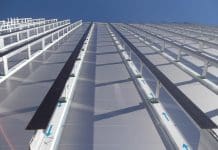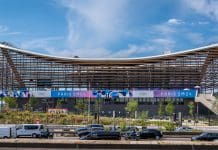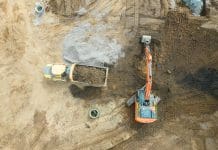Digital twins are more than project management tools; used to their full potential the technology gives project teams a level of insight and control that simply isn’t possible to achieve otherwise, argues Neil Thompson, director of digital construction at Atkins
When people think of using digital twin technology in infrastructure, they typically imagine a project team planning and overseeing the construction of a new site. True, they enable large teams, from many different organisations, to cooperate smoothly and get the build completed with as few unforeseen problems as possible.
However, digital twinning is far more than just a project management tool and most teams aren’t even close to employing the technology to its full potential yet. This needs to be remedied because putting it to work throughout a project’s lifecycle can help enable next level results.
Using a well-managed, up-to-date digital twin, site managers can now model everything from material stress to usage patterns, allowing them to keep maintenance costs to a minimum while maximising utilisation rates and return on investment (RoI).
A recent example of this would be Atkins’ work with Network Rail to use LiDAR (Light Detection and Ranging) data sent from scanners mounted on helicopters to create a 3D representation of the railway. Analytical models are then applied to inform asset management decisions, such as where on the network vegetation is encroaching.
Let’s break the potential of this technology down across the project lifecycle (see infographic).
Phase 1: Due diligence
Designing a new piece of infrastructure is still a very manual process. Design is typically carried out across a range of unconnected or poorly connected systems – sometimes even on paper – which is extremely time consuming. And because it’s so time consuming, often there isn’t the opportunity to capture the kind of complex information required to ensure optimal performance and the best user experience.
Imagine, for instance, that you’re designing a road between two towns. The traditional approach would be to survey the space between them and then work out the most direct, feasible route to carry the required number of vehicles.
That’s adequate but it misses out whole layers of complexity. Usually there is only enough time to design a small number of options, leaving additional questions unanswered, such as: how can we ensure the best possible user experience for this road and that across the lifespan of the road, it’s as sustainable as possible? To answer these questions in a meaningful way requires complex scenario modelling and testing.
That’s one area in which digital twinning can play a role in greatly improving the effectiveness of infrastructure planning from the concept stage onwards. Using a digital twin, we can design a million times a day and refocus the efforts of our smart designers on adding value instead.
Digital twins allow you to capture all the relevant variables from the start of the project, use these to model different usage and efficiency scenarios and then create the best possible designs using the information you obtain. This is a level of due diligence that’s simply not possible with a manual process, nor even one that’s digitised but relies on siloed tools and teams. There is no other way to build a generative design that creates millions of options for designers to curate into the most sustainable one.
Phase 2: Simulation, rehearsal and quality assurance
Digital twin technology is also enabling teams to vastly improve how a space operates for its users. During the design phase, planners can run simulations of everything from pedestrian models, using computational fluid dynamics, right through to business model projections. Feeding back into an iterative design process – one that changes by increments in response to the outcome of each simulation – it empowers us to produce infrastructure that’s more sustainable and a better fit for purpose.
With the right platforms, you can even rehearse the construction process right there in the digital twin then pass the data from those rehearsals to the systems on site. This could be as detailed as passing precise cutting instructions, which factor in a detailed model of the site’s geology, to the machines at work. Given virtual mistakes are far cheaper to make than real world ones, this is of huge benefit, improving and accelerating outcomes, and massively reducing the scope for human error.
As the way a piece of infrastructure gets used changes, a digital twin simulation can also help the structure’s operators understand the implications of this evolution, plan modifications and optimisations, and scope new business and usage models to ensure long-term profitability and sustainability.
Design and operation can even be made more effective through quality assurance. Using digital twin technology, you can run an almost infinite range of scenario modelling to verify that the structure you’re building will perform within, and to the limits of, the design specifications and the expected load.
Phase 3: Intelligent operations
With a well-managed and constructed, and continually updated digital twin, anyone from the project or management team can navigate a digital reconstruction of a given piece of infrastructure.
As they navigate the site, the person can interact with the environment as a user would see it but at the same time also with the data behind each element of the site. They could, for instance, click on a wall and see what it’s made of and what stresses it can withstand. Or they could access the data for pedestrian or vehicle flows to gain a deeper understanding of how the structure performs and functions under different scenarios. Augmenting the real world with the virtual world in this way enables data to be experienced in its context, not just as an abstract 2D image or bar chart on a dashboard.
In the future, digital twin operators may even be able to take this one step further, using automated or robotic maintenance that would allow engineers to carry out maintenance work remotely, by working through a digital twin.
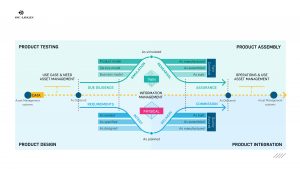
Smarter working for a competitive edge
The point is that digital twin technology gives project teams a level of insight and control that simply isn’t possible to achieve otherwise and frees up valuable time for frontline workers to focus on tasks that really add value. With the right digitally supported decision-making tools, a person can make the best decisions at the right time.
Those infrastructure companies that put the work into adapting their project workflows in this way will not only achieve their goals faster and more effectively, but they’ll also take their design and execution to a whole new level too – one that will undoubtedly set them apart in the marketplace. With the value of the digital twin market predicted to swell 10-fold to $35.8bn by 2025 as usage increases sharply, can you really afford not to?
Neil Thompson
Director of digital construction
Atkins, a member of the SNC-Lavalin Group
Twitter: Atkinsglobal
LinkedIn: Atkins
YouTube: Atkins
Instagram: insideatkins


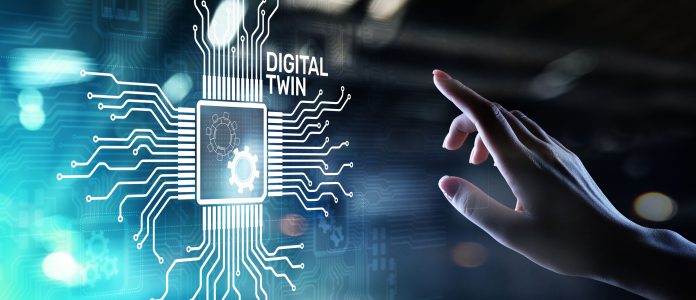
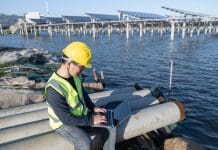
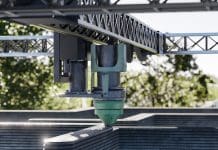



![[VIDEO] World’s largest crane lifts final ring at Hinkley Point C Big Carl, the world's largest crane, lifting the final liner ring for Hinckley Point C](https://www.pbctoday.co.uk/news/wp-content/uploads/2024/10/94747-218x150.jpg)

